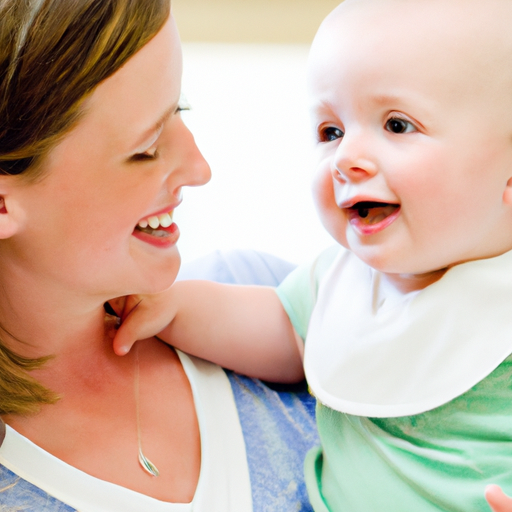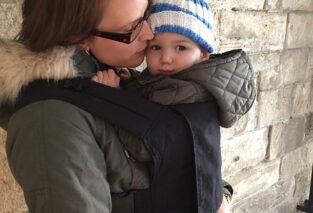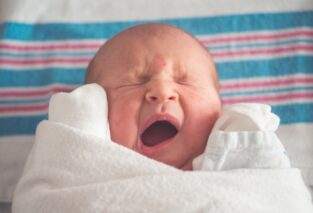So, you’re expecting a little bundle of joy soon, and you’re realizing just how many baby products are out there. From cribs to strollers to bottles, it can be overwhelming trying to figure out which ones are the best for your baby. But don’t worry, I’ve got some tips to help you choose the right baby products for your little one.
In the article, you’ll learn about the different factors to consider when choosing baby products, such as safety, convenience, and budget. We’ll discuss how to research and read reviews to ensure you’re making an informed decision, and we’ll also touch on the importance of considering your baby’s specific needs and preferences. By the end, you’ll feel confident in your ability to choose the right baby products that will keep your little one safe, comfortable, and happy. So, let’s get started and make shopping for baby products a breeze! When it comes to choosing baby products, there are several factors that you need to consider. The safety and quality of the products should be your top priority, as well as the age and development of your baby. Cost, ease of use, and brand reputation are also important factors to take into account. In this article, we will discuss these factors in detail and provide a guide to help you choose the right baby products for your little one.
Safety and Quality
The safety and quality of baby products should always be your number one concern. Look for products that meet safety standards and have been tested for their durability. Check for certifications and regulations to ensure that the products have undergone rigorous testing. It is also important to choose products that are free from harmful chemicals and toxins. Look for labels that indicate that the product is BPA-free, phthalate-free, and lead-free.
Age and Development
Another important factor to consider when choosing baby products is the age and development of your baby. Different products are designed for different age groups, so make sure to choose products that are suitable for your baby’s age. For example, newborns require different types of diapers and clothing compared to older babies. It is also important to consider your baby’s developmental stage. Choose toys that are appropriate for their age and will help stimulate their senses and promote their development.
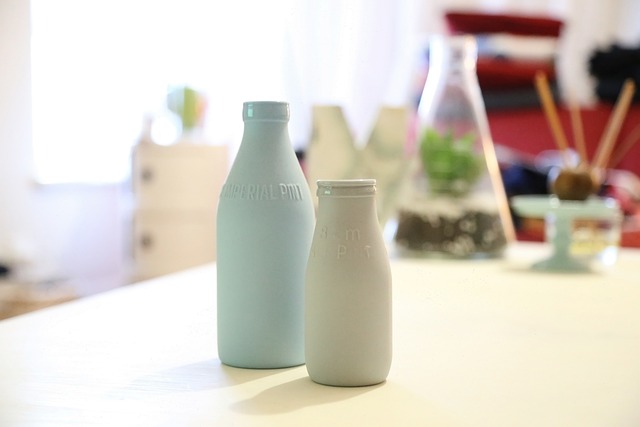
Cost
Cost is a significant factor to consider when choosing baby products. While it can be tempting to splurge on expensive items, it is important to set a budget and stick to it. Remember that expensive does not always mean better. There are plenty of affordable baby products available in the market that are of good quality and safe for your baby. Consider the long-term cost of the product as well. For example, cloth diapers may have a higher upfront cost but can save you money in the long run compared to disposable diapers.
Ease of Use
As a parent, you want baby products that are easy to use and convenient. Look for products that are user-friendly and require minimal effort to assemble or operate. Consider the ease of cleaning and maintenance as well. For example, choose baby bottles that are easy to clean and sterilize. Car seats and strollers should be easy to install and adjust. High chairs should be easy to clean and have safety features such as a harness to secure your baby.

Brand Reputation
Brand reputation is an important factor to consider when choosing baby products. Choose brands that have a good track record and positive reviews from other parents. Research the brand’s history, customer feedback, and any recalls or safety issues they may have had in the past. Look for brands that have a reputation for producing high-quality, safe, and reliable products. Be cautious of unknown or generic brands, as their products may not have undergone proper testing and quality control.
Now that we have discussed the factors to consider when choosing baby products, let’s explore the different types of baby products you need to consider.
Types of Baby Products to Consider
- Diapers and Wipes: One of the essential baby products is diapers. Choose between cloth diapers and disposable diapers, based on your preference and lifestyle. Consider eco-friendly diaper options as well. Don’t forget to stock up on baby wipes for easy and convenient diaper changes.
- Baby Food and Formula: If you plan on bottle-feeding your baby, choose a formula that is appropriate for their age and nutritional needs. If you plan on breastfeeding, invest in breastfeeding essentials such as a breast pump, nursing bras, and nursing pads. As your baby grows, introduce solid foods and choose baby food that is appropriate for their age and developmental stage.
- Clothing and Accessories: Babies grow quickly, so it’s important to invest in a range of clothing options that are comfortable and suitable for the weather. Look for clothing made from soft, breathable fabrics. Don’t forget to purchase accessories such as hats, socks, and bibs.
- Nursery Furniture and Equipment: Create a safe and comfortable environment for your baby with the right nursery furniture and equipment. Consider items such as a crib, mattress, changing table, dresser, and rocking chair. Make sure to choose furniture that meets safety standards and has features such as adjustable mattress heights and sturdy construction.
- Toys and Books: Toys are important for your baby’s development and entertainment. Choose toys that are age-appropriate and safe for your baby. Look for toys that promote sensory development, motor skills, and cognitive development. Invest in a variety of books as well to encourage early literacy and language development.
Now that you have an understanding of the types of baby products to consider, let’s explore some safety guidelines to keep in mind when selecting these products.

Safety Guidelines for Baby Products
- Certifications and Regulations: Look for baby products that have been tested and certified by reputable organizations and comply with safety regulations. Check for certifications such as JPMA (Juvenile Products Manufacturers Association) to ensure the products meet safety standards.
- Avoiding Choking Hazards: Choose toys and accessories that do not have small parts that can pose a choking hazard to your baby. Avoid items with loose buttons, strings, or attachments that can come off easily.
- Safe Sleep Practices: Follow safe sleep practices to reduce the risk of Sudden Infant Death Syndrome (SIDS). Place your baby on their back to sleep, use a firm mattress in a crib that meets safety standards, and avoid using pillows, blankets, or stuffed animals in the crib.
- Non-toxic Materials: Choose baby products made from non-toxic materials. Look for products that are free from harmful chemicals such as BPA, phthalates, and lead. Opt for organic and natural materials whenever possible.
- Babyproofing: As your baby becomes more mobile, it’s important to babyproof your home. Install safety gates, cabinet locks, outlet covers, and secure furniture to prevent accidents and injuries.
Now that you are familiar with the safety guidelines, let’s move on to the next step in choosing baby products – researching and comparing.
Researching and Comparing Baby Products
- Read Reviews and Recommendations: Read customer reviews and recommendations from other parents to get insights into the quality and performance of the products you are considering. Websites and online forums dedicated to parenting can be valuable sources of information.
- Compare Features and Specifications: Compare the features, specifications, and materials used in different baby products. Look for unique features that may enhance the usability or safety of the product. Consider the size, weight, and portability of the product as well.
- Consult Experts and Parents: Seek advice from pediatricians, child development experts, and other parents who have experience with the products you are considering. They can provide valuable insights and recommendations based on their expertise and personal experience.
- Consider Long-term Use: Some baby products can be used beyond the infant stage, such as convertible car seats and cribs that can be transformed into toddler beds. Consider the long-term value and versatility of the product before making a purchase.
- Check for Recalls: Before buying any baby product, check for recalls. Manufacturers sometimes issue recalls on products due to safety concerns. Visit the manufacturer’s website or the CPSC (Consumer Product Safety Commission) website for the latest information on product recalls.
Now that you have done your research and compared different baby products, it’s time to test and trial them.
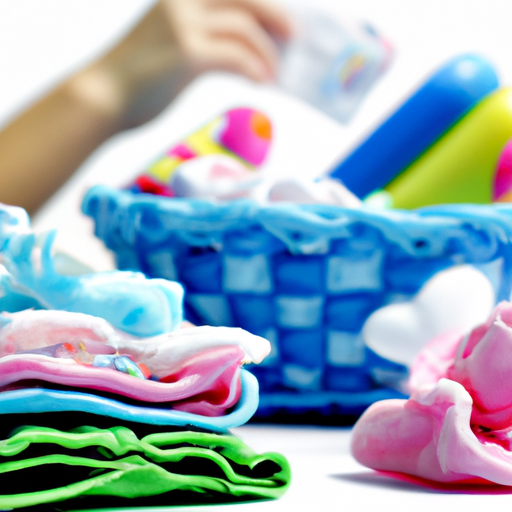
Test and Trial Baby Products
- Attend Baby Product Expos: Baby product expos and trade shows are a great opportunity to see and try out a wide range of baby products. These events often have experts on hand to provide advice and answer any questions you may have.
- Visit Baby Stores: Visit baby stores and check out their product displays. Take the time to interact with the products to assess their quality, functionality, and ease of use.
- Borrow or Rent Before Buying: If possible, borrow or rent baby products before making a purchase. This will give you an opportunity to test the product and evaluate its suitability for your baby without committing to a long-term purchase.
- Ask for Sample Products: Contact manufacturers and baby product companies and inquire if they offer sample products. Some companies provide samples for parents to try before they make a purchase.
- Reevaluate as Baby Grows: As your baby grows and reaches different developmental milestones, reevaluate the products you are using. Assess whether they still meet the needs and safety requirements of your growing baby.
Now, let’s discuss some factors to avoid when choosing baby products.
Factors to Avoid When Choosing Baby Products
- Overbuying: It’s easy to get carried away when shopping for baby products. Avoid overbuying unnecessary items that your baby may not use or outgrow quickly.
- Relying Solely on Brand Name: While brand reputation is important, it is not the only factor to consider. Don’t rely solely on brand names and take into account other factors such as safety, quality, and affordability.
- Ignoring Product Age Recommendations: Pay attention to the age recommendations specified by the manufacturer. Using products that are not suitable for your baby’s age can pose safety risks.
- Choosing Poorly Constructed Items: Poorly constructed baby products may not be sturdy or durable enough to withstand regular use. Check the construction and quality of the product before making a purchase.
- Using Unsafe Hand-me-downs: While hand-me-downs can save you money, make sure to assess the safety and condition of the items. Avoid using hand-me-downs that are outdated, damaged, or do not meet current safety standards.
Now that you are aware of the factors to avoid, let’s explore eco-friendly and organic baby products.
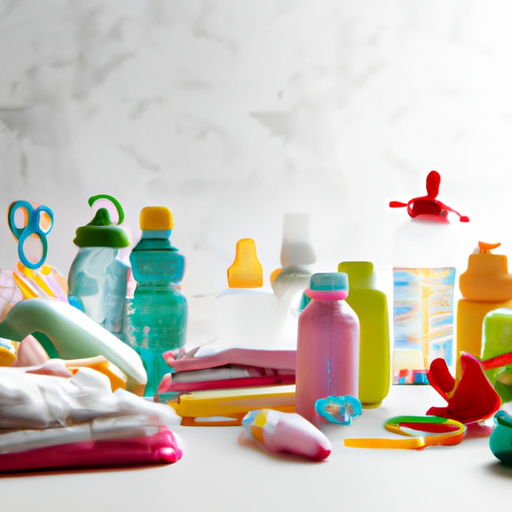
Eco-friendly and Organic Baby Products
- Benefits of Eco-friendly Products: Eco-friendly baby products are made from sustainable materials and reduce environmental impact. They are free from harmful chemicals and toxins, making them safe for your baby and the planet.
- Certifications for Organic Products: Look for certifications such as USDA Organic and GOTS (Global Organic Textile Standard) to ensure that the products are made from organic materials and have met strict standards.
- Organic Skincare and Cleaning Products: Choose organic skincare and cleaning products for your baby to avoid exposing their delicate skin to synthetic chemicals. Look for products that are free from parabens, sulfates, fragrances, and dyes.
- Eco-conscious Accessories and Clothing: Opt for accessories and clothing made from organic and sustainable materials such as organic cotton, bamboo, or hemp. These materials are free from pesticides and chemicals and are gentler on your baby’s skin.
- Eco-friendly Packaging: Choose baby products that have minimal packaging or packaging made from recyclable materials. Look for brands that prioritize sustainable packaging practices to reduce waste.
Now, let’s discuss budget-friendly baby products.
Budget-friendly Baby Products
- Finding Deals and Discounts: Keep an eye out for deals and discounts on baby products. Subscribe to newsletters or follow brands on social media to be informed about sales and promotions.
- Secondhand and Gently Used Items: Consider buying secondhand or gently used baby products. Many items, such as clothing, furniture, and toys, are still in excellent condition and can save you money.
- Subscription Services: Some baby products can be purchased through subscription services, allowing you to save money and receive products regularly without the hassle of going to the store.
- Bulk Buying: Buying baby products in bulk, such as diapers or wipes, can often save you money in the long run. Look for discounts or bulk-buying options available online or in retail stores.
- DIY Options: Explore do-it-yourself (DIY) options for certain baby products, such as homemade baby food, baby laundry detergent, or reusable cloth wipes. DIY options can be cost-effective and provide you with more control over the ingredients and materials used.
When choosing baby products, it is important to consult healthcare professionals for their recommendations and advice.
Consulting Healthcare Professionals
- Pediatrician’s Recommendations: Your pediatrician is a valuable resource when it comes to choosing baby products. They can provide guidance on the best products for your baby’s specific needs and any concerns you may have.
- Allergies and Special Needs: If your baby has allergies or special needs, consult with healthcare professionals for product recommendations that are safe and suitable for your baby’s condition.
- Product Safety Concerns: If you have any concerns about the safety of a specific baby product, consult with your pediatrician or other healthcare professionals. They can provide insights into potential risks and help you make an informed decision.
- Appropriate Developmental Toys: Consult with your pediatrician or child development experts to ensure that the toys you choose are appropriate for your baby’s developmental stage. They can provide recommendations based on your baby’s milestones and abilities.
- Feeding and Nutrition Advice: Seek advice from healthcare professionals regarding feeding and nutrition. They can guide you on age-appropriate foods, feeding schedules, and introduce you to products that meet your baby’s nutritional needs.
In conclusion, choosing the right baby products involves considering factors such as safety and quality, age and development, cost, ease of use, and brand reputation. Researching and comparing products, testing and trialing them, and consulting healthcare professionals are important steps to take. Avoiding factors such as overbuying and relying solely on brand names is crucial. You can also explore eco-friendly and organic options, as well as budget-friendly alternatives. By considering these factors and following safety guidelines, you can ensure that you choose the best baby products for your little one.


